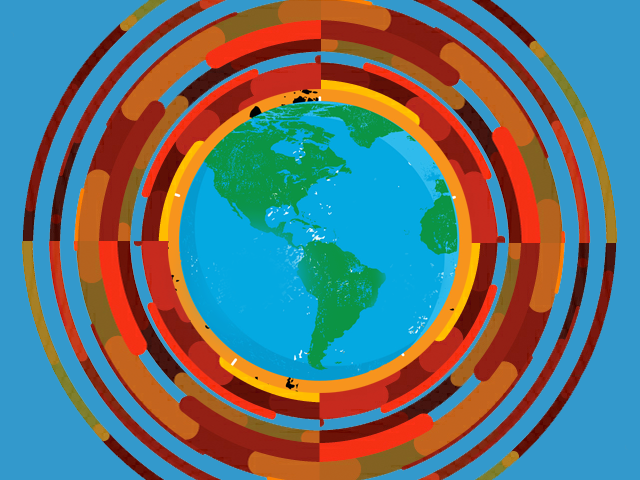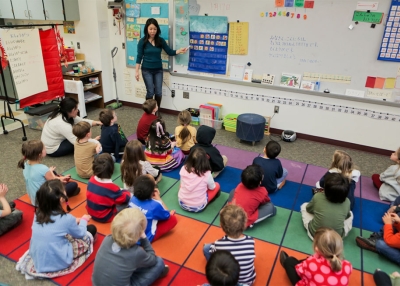Common Core: Getting There Globally

by Elizabeth Howald
Eighty-seven percent of K-12 students in the U.S. live in states that have adopted the Common Core State Standards. Though this widespread approval is no small feat in a country that has long resisted national learning standards, the Common Core cannot truly be called a success until the standards are effectively implemented.
With Common Core assessments coming online in 2014–2015, educators have had to grapple with tough questions on a tight timeline: What does a lesson that is aligned to the Common Core look like in practice? Must the standards’ emphasis on skills come at the expense of important content knowledge? And what is a complex informational text anyway?
Thankfully, the Partnership for Assessment of Readiness for College and Careers (PARCC) and the Common Core State Standards Initiative—along with numerous other organizations and institutions—have published resources to help educators understand the fundamentals of the Common Core and to unpack its terminology. State departments of education have created instructional materials and model lessons, and publishing companies have scrambled to revamp texts and to offer programs that align with Common Core standards.
While these resources provide much-needed answers to the questions outlined above, they largely overlook one critical aspect of the standards: the Common Core’s support for learning about diverse histories and cultures.
The authors of the Common Core State Standards clearly view global awareness as an essential feature of college and career readiness. The standards explicitly call for students to learn about global histories and cultures through literature and informational texts from across genres, eras, and world regions. Despite this endorsement of global learning, many Common Core resources lack an international dimension. In fact, when a participant at a recent conference on curriculum development spoke with five exhibitors about their Common Core offerings, she discovered that not one of them had a program that includes a global dimension.
To overlook the global aspect of the Common Core would constitute not only a failure in implementing the standards, but also in preparing students for successful college, career, and life experiences. To thrive in today’s global society, students need to communicate and collaborate across cultures and regions. Thus, as educators and institutions transition from a theoretical understanding of the Common Core to its practical application, it is imperative that they emphasize global learning and awareness.
For many educators, the idea of teaching global literature is not new. Teachers might have already incorporated global folktales, myths, poetry, plays, or works of fiction into their teaching. However, the mandate to integrate informational texts and literary nonfiction can be more daunting. Luckily, the Common Core definition of “informational text” is broad, including (but not limited to) biographies, memoir, technical texts, graphs and charts, speeches, essays, opinion pieces, and digital sources such as blogs.
With a little strategic thinking and the help of the Internet, educators can find global resources for teaching world histories, cultures, and current events in ways that support Common Core objectives. For example, in addition to reading an American literary classic like Tim O’Brien’s The Things They Carried when learning about the Vietnam War, ELA or history students could read oral history interviews from Vietnamese soldiers and civilians to learn about their perspectives on the war. Alternatively, they could examine Ho Chi Minh’s speeches to explore both his style of speaking and his changing views on Communism and Vietnam’s struggle for independence. For speaking or writing standards, teachers could have students debate how the U.S. should have responded to Ho Chi Minh, or ask them to identify Vietnamese motivations for fighting.
Because the Common Core applies to secondary teachers of many subjects, it opens up opportunities to work together across departments. In one example we have witnessed, an ELA and history teacher worked together to craft interdisciplinary curriculum about Shooting an Elephant, George Orwell’s essay about being a police officer in Burma. The history teacher paired it with informational texts explaining the complexities of colonialism in Burma. From a different angle, the English teacher had students “storyboard” its structural elements, show how Orwell's choices of words helped to shape meaning and tone in the essay, and compare how Orwell and modern graphic novelist Guy Delisle (Burma Chronicles) both created a sense of detachment from the Burmese.
Global resources have a place in elementary classrooms as well. Examining Japanese railway maps and watching videos of Japanese trains would provide students with insight into Japanese cultural values of order, efficiency, and punctuality. Writing narrative or informational paragraphs about the videos would reinforce student learning and develop writing skills, while drawing comparisons between public transportation systems in the U.S. and Japan would build critical thinking and analytical skills.
These teaching ideas—along with many more—are explained in detail at Primary Source World, an online collection of activities built around global primary sources and aligned with Common Core reading and writing standards. You can also find global resources in “Reading Nonfiction: A Global Approach to the Common Core,” an online resource guide that contains recommended global texts for various grade levels as well as links to online databases, articles, and teaching strategies.
The resources and ideas mentioned here are a good starting point for thinking about the practical application of Common Core objectives, but they are just a first step towards implementing the standards. Educators will need to participate in Common-Core-focused professional development; to reevaluate their approach to teaching fiction and nonfiction; to challenge their students to interact and engage in more cognitively demanding ways; and, maybe most important, to ensure that the hard work being done in classrooms is adequately preparing students to succeed in our increasingly interconnected world. This will require educators to integrate global education into their curriculum and to use global resources that help students build essential analytical and cross-cultural communication skills. These tasks will not always be easy, but they are necessary steps if our students are to become productive, responsible, and successful world citizens.
Common Core Resources
- Common Core State Standards Initiative
- Partnership for 21st Century Skills Common Core Toolkit
- Partnership for Assessment of Readiness for College and Careers
- Smarter Balanced Assessment Consortium
Teaching Resources
- Primary Source Nonfiction Resource Guide
- Primary Source Regional Guides
- Primary Source World
- World Digital Library
- Online Newspapers
Elizabeth Howald is a program director at Primary Source, a nonprofit organization in Watertown, Massachusetts, dedicated to deepening teachers’ knowledge of world histories and cultures.





